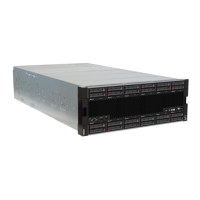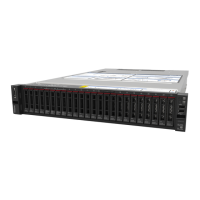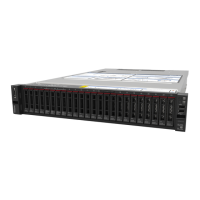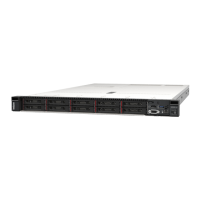https://lenovopress.com/servers/options/memory
In addition, you can take advantage of a memory configurator tool, which is available at the following site:
http://1config.lenovo.com/#/memory_configuration
For specific information about the required installation order of memory modules in your server based on the
system configuration and memory mode that you are implementing, see
the ThinkSystem SR950 Memory
Population Reference
.
Independent memory mode
Independent memory mode provides the highest level of memory performance, but lacks failover protection.
See
the ThinkSystem SR950 Memory Population Reference for independent memory mode requirements and
recommended memory module population sequences.
Memory mirroring
Memory-mirroring mode provides full memory redundancy while reducing the total system memory capacity
in half. Memory channels are grouped in pairs with each channel receiving the same data. If a failure occurs,
the memory controller switches from the DIMMs on the primary channel to the DIMMs on the backup
channel.
See
the ThinkSystem SR950 Memory Population Reference for memory mirroring requirements and
recommended memory module population sequences.
Memory sparing
In memory-sparing mode, one memory rank serves as a spare for other ranks on the same channel in case
they fail. The spare rank is held in reserve and not used as active memory until a failure is indicated, with
reserved capacity subtracted from the total available memory in the system. After an error threshold is
surpassed in a system protected by memory sparing, the content of a failing rank of DIMMs is copied to the
spare rank. The failing rank is then taken offline and the spare rank placed online for use as active memory in
place of the failed rank. Since the failover process involves copying of memory content, the level of memory
redundancy provided by memory sparing is less than that provided by memory mirroring: memory mirroring
is the preferred failure-protection choice for critical applications.
See
the ThinkSystem SR950 Memory Population Reference for memory sparing requirements and
recommended memory module population sequences.
Configure DC Persistent Memory Module (DCPMM)
Follow the instructions in this section to configure DCPMMs and DRAM DIMMs.
DCPMM capacity could act as accessible persistent memory for applications or volatile system memory.
Based on the approximate percentage of DCPMM capacity invested in volatile system memory, the following
three operating modes are available:
• App Direct Mode (0% of DCPMM capacity acts as system memory):
In this mode, DCPMMs act as independent and persistent memory resources directly accessible by
specific applications, and DRAM DIMMs act as system memory.
The total displayed volatile system memory in this mode is the sum of DRAM DIMM capacity.
Notes:
Chapter 4. System configuration 261

